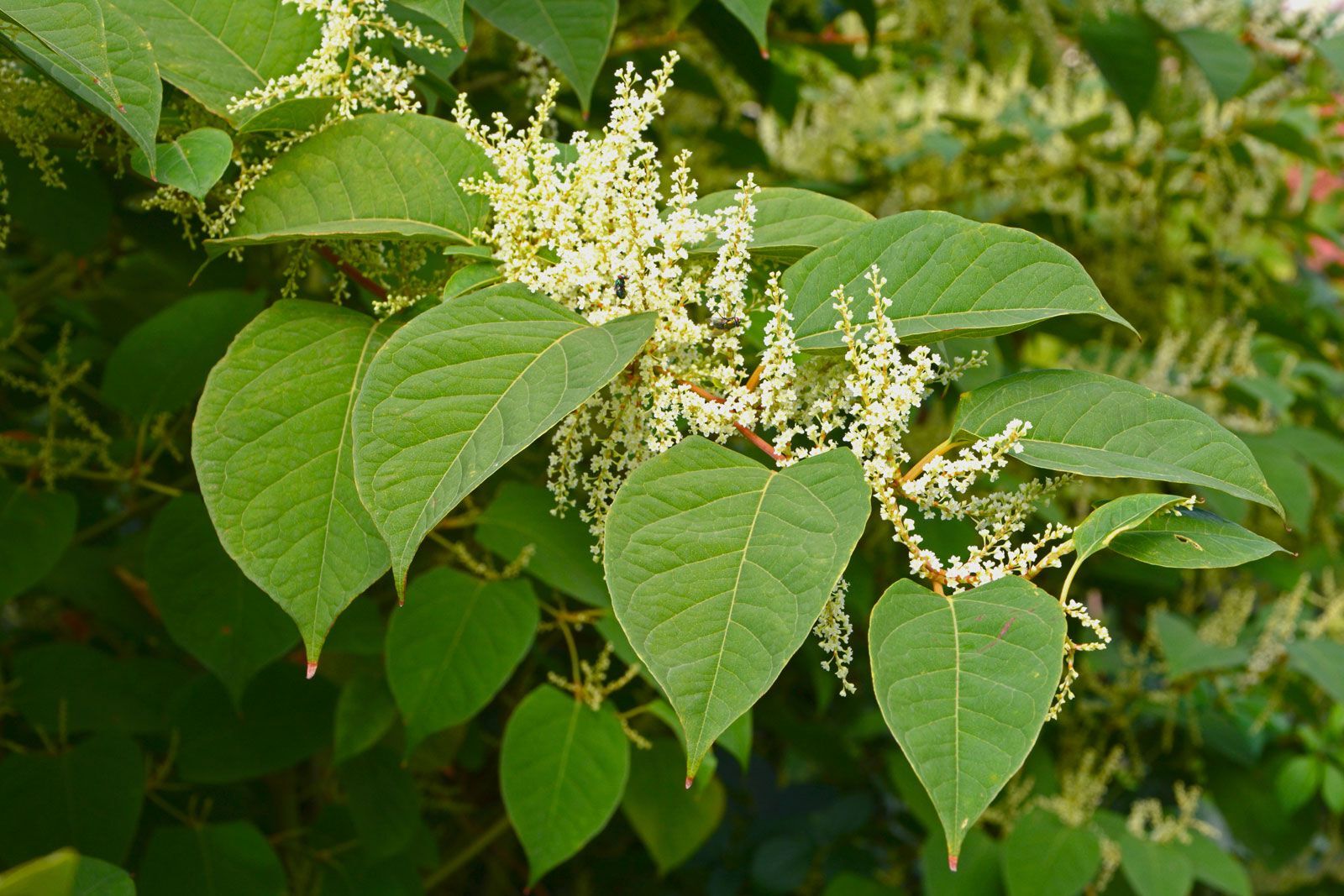
What makes Japanese Knotweed one of the most notorious invasive species in the world? This plant, scientifically known as Fallopia japonica, is infamous for its rapid growth and destructive nature. Originating from East Asia, it can reach heights of up to 10 meters in just six weeks. Its bamboo-like stems and heart-shaped leaves make it easily recognizable. However, its beauty is deceptive. Japanese Knotweed spreads through an extensive underground root system, making it incredibly difficult to eradicate. This invasive species causes significant ecological and economic damage, from disrupting native ecosystems to damaging infrastructure. Understanding its biology and implementing effective control methods are crucial for mitigating its impact.
Key Takeaways:
- Japanese knotweed is a fast-growing, invasive plant with a root system that can cause serious damage to infrastructure and ecosystems. It's important to identify and control it early to prevent further spread.
- Efforts to control Japanese knotweed are ongoing, but the battle is far from over. Persistence and early detection are crucial, and myths about containment should be debunked.
40 Facts About Japanese Knotweed
Japanese knotweed, known scientifically as Fallopia japonica or Polygonum cuspidatum, is a plant that has caused quite a stir globally. Native to East Asia, this herbaceous perennial has become infamous for its invasive nature. Let's dive into some fascinating facts about this plant.
What Makes Japanese Knotweed So Invasive?
Understanding why Japanese knotweed is considered one of the worst invasive species can help us grasp the severity of its impact.
- Invasive Species: Japanese knotweed ranks among the top 100 worst invasive species according to the International Union for Conservation of Nature (IUCN).
- Growth Rate: This plant can grow up to 10 meters tall in just six weeks, making it incredibly fast-growing.
- Appearance: It forms large colonies of erect, arching stems that look like bamboo. These stems are round, smooth, and hollow with reddish-brown blotches.
- Leaf Structure: Leaves are simple, alternate, 3-4 inches wide, and 4-6 inches long. They are spade-shaped and more heart-shaped on young shoots. The upper surface is dark green while the lower surface is pale green.
- Flowers: The plant produces creamy white or greenish flowers in plume-like clusters near the end of stems. These flowers bloom from August to September.
- Fruits and Seeds: Seeds are small, triangular, shiny, and black. They are produced by female plants but are rare since colonies seldom have male and female plants.
The Root of the Problem
The root system of Japanese knotweed is one of the primary reasons for its invasive nature.
- Root System: The roots are white and present along the rhizome. Plants can also produce adventitious roots on lower stems. These roots extend deeply into the soil, creating a dense impenetrable mat.
- Spread Mechanism: Japanese knotweed spreads via its extensive underground root system (rhizomes). A piece of rhizome as small as 0.6 grams can result in new growth and a new problem for property managers.
- Depth of Rhizomes: The rhizomes can grow to depths of up to two meters and extend up to seven meters horizontally from the visible part of the plant.
- Resilience: The rhizomes can remain dormant for up to 20 years under the soil, allowing the plant to survive and thrive in adverse conditions.
From East Asia to the World
How did this plant travel from its native range to become a global problem?
- Native Range: Japanese knotweed originated in Japan and was introduced to the UK by Philip von Siebold in 1850. It was initially brought to the UK as an ornamental plant for commercial sale and botanical cultivation.
- UK Distribution: The plant has spread across almost all areas of the UK, with the highest concentration in Wales.
- Economic Impact: The control and management of Japanese knotweed cost the UK economy £1.5 billion annually.
- Legal Implications: In the UK, property owners are liable if Japanese knotweed makes it onto their neighbors' land. This can lead to significant legal and financial issues.
The Damage It Causes
Japanese knotweed isn't just a nuisance; it can cause serious damage to infrastructure and ecosystems.
- Damage to Infrastructure: Japanese knotweed can cause catastrophic damage to roads, buildings, and other structures by growing through cracks and holes in concrete, tarmac, and drains.
- Ecological Threat: The plant poses a significant threat to riparian areas by preventing streamside tree regeneration and increasing soil erosion.
- Allelopathic Compounds: Japanese knotweed releases chemicals into the soil that inhibit the growth of other plants, further contributing to its invasive nature.
- Native Ecosystem Impact: In its native range, Japanese knotweed is kept in check by various insects and diseases. However, in non-native regions like the UK, it lacks these natural controls, allowing it to outcompete native species.
Identifying Japanese Knotweed
Knowing how to identify this plant is crucial for early detection and control.
- Identification: The plant's zig-zag stem structure and shovel-shaped leaves are distinctive features. In winter, only dark brownish-red stems are visible above ground.
- Control Methods: Mechanical control involves hand-pulling young plants or digging when the soil is soft. Chemical control often involves foliar application of herbicides like glyphosate, triclopyr, dicamba, or imazapyr.
- Biological Control: Biological control methods include introducing insects that feed on Japanese knotweed. However, this approach is complex and requires careful consideration to avoid introducing unwanted species.
Historical Spread and Current Distribution
Understanding the history of Japanese knotweed's spread can provide insights into its current distribution.
- Historical Spread: The plant began to spread after being cultivated in Kew Gardens. It was then sold for residential garden use, leading to its rapid dissemination across the UK.
- Native Insect Predators: In Japan, over 180 indigenous species feed on Japanese knotweed, helping to keep it in check. Researchers are exploring ways to introduce these predators to non-native regions.
- Disease Resistance: Japanese knotweed is affected by various diseases in Japan, which help control its population. However, these diseases are less effective in non-native regions.
Cultural and Economic Impact
Despite its invasive nature, Japanese knotweed has some cultural significance and economic implications.
- Cultural Significance: Despite its invasive nature, Japanese knotweed is edible and used in some restaurants. It can also withstand extreme temperatures, growing on the side of volcanoes or in sub-zero conditions.
- Public Perception: The plant has earned several ominous nicknames, including "the Devil's Bamboo" and "Demon Weed," due to its ability to cause significant ecological and economic damage.
- Banking Restrictions: In the UK, banks will not issue mortgages for properties where Japanese knotweed is found or suspected. This highlights the severity of the issue and the need for early detection and treatment.
The Battle Against Japanese Knotweed
Efforts to control and eradicate Japanese knotweed are ongoing, but the battle is far from over.
- Property Damage: Japanese knotweed can grow under footpaths and buildings, exploiting any weakness within the structure. Early-stage damage identification is crucial for effective treatment.
- Re-emergence: The plant can re-emerge and re-grow of its own accord, especially if the contaminated ground is disturbed. This can happen through digging, household gardening, or extreme flooding.
- Myth-Busting: A common myth is that planting Japanese knotweed in a pot will contain it. However, this is not the case as the rhizomes can still spread and cause new infestations.
Ecological Impact
The ecological impact of Japanese knotweed extends beyond just plant competition.
- Native Habitat Impact: In riparian areas, Japanese knotweed prevents streamside tree regeneration and increases soil erosion. This disrupts nutrient cycling and creates an impenetrable mat of roots.
- Native Ecosystem Disruption: The dense canopy of leaves produced by Japanese knotweed can block sunlight, smothering other plant species and disrupting native ecosystems.
- Flooding Risk: The large overwintering canes of Japanese knotweed can block water channels, increasing the likelihood of flooding. This further exacerbates the ecological damage caused by the plant.
Biological Control and Research
Research into biological control methods offers hope for managing Japanese knotweed.
- Native Insect Feeding: In Japan, various insects feed on Japanese knotweed, helping to control its population. These insects are being studied for potential introduction to non-native regions.
- Disease Impact: Japanese knotweed is affected by several diseases in Japan, which help keep its population in check. However, these diseases are less effective in non-native regions.
- Ecological Domino Effect: The invasive nature of Japanese knotweed leads to a domino effect, where other native species like insects and birds are forced to leave the area due to the plant's dominance.
Historical Introduction and Current Spread
The journey of Japanese knotweed from its introduction to its current spread is a tale of unintended consequences.
- Historical Introduction: The first recorded introduction of Japanese knotweed to the UK was by Philip von Siebold in 1850. It was initially intended for ornamental purposes but quickly spread beyond control.
- Current Spread: Today, Japanese knotweed is found across most of the US, from Washington state to Ohio. It reproduces vegetatively and can grow through cracks in asphalt and other structures.
Effective Control Methods
Controlling Japanese knotweed requires persistence and the right methods.
- Glyphosate Efficacy: Glyphosate is an effective herbicide for controlling large populations of Japanese knotweed. It can be applied foliarly or through needle injection into the lower nodes of each stem.
- Control Persistence: Persistence is key to controlling Japanese knotweed infestations. Early detection and repeated treatment are crucial to preventing the spread of this invasive species.
The Persistent Threat of Japanese Knotweed
Japanese knotweed is a relentless invader. Its rapid growth, deep-reaching rhizomes, and ability to outcompete native species make it a formidable foe. This plant's impact isn't just ecological; it also causes significant economic damage, costing the UK economy £1.5 billion annually. Legal issues arise when it spreads to neighboring properties, and its presence can even affect mortgage approvals.
Controlling Japanese knotweed requires persistence. Mechanical and chemical methods can help, but early detection is crucial. Biological control, though promising, needs careful consideration to avoid introducing new problems.
Understanding Japanese knotweed's characteristics and spread mechanisms is vital for effective management. By staying informed and vigilant, we can mitigate its impact and protect our ecosystems and infrastructure.
Frequently Asked Questions
Was this page helpful?
Our commitment to delivering trustworthy and engaging content is at the heart of what we do. Each fact on our site is contributed by real users like you, bringing a wealth of diverse insights and information. To ensure the highest standards of accuracy and reliability, our dedicated editors meticulously review each submission. This process guarantees that the facts we share are not only fascinating but also credible. Trust in our commitment to quality and authenticity as you explore and learn with us.


